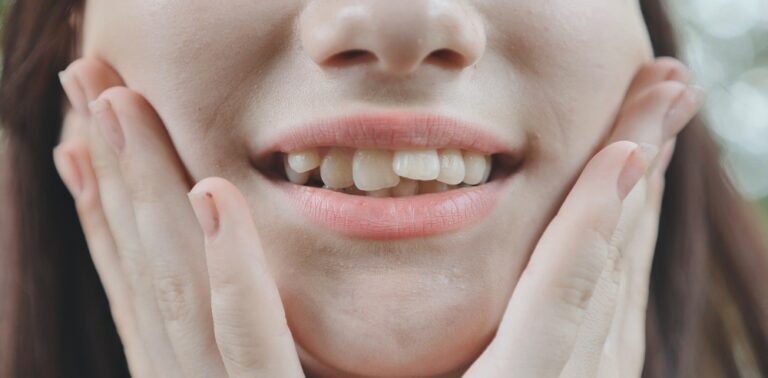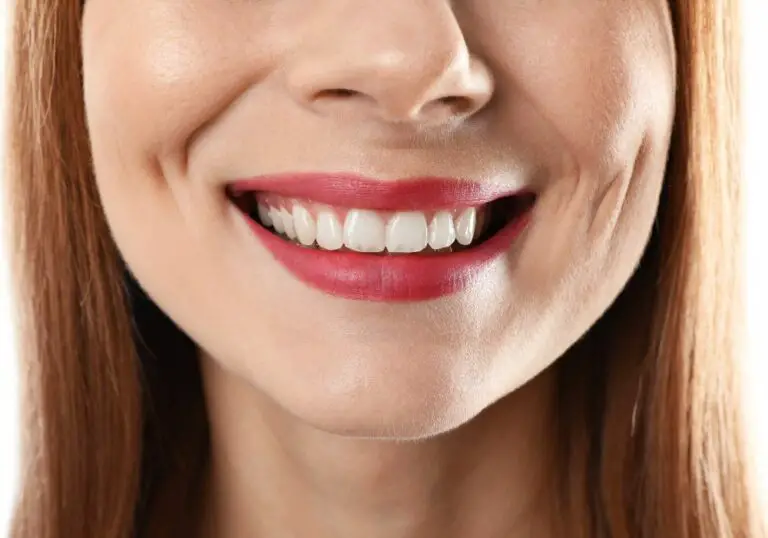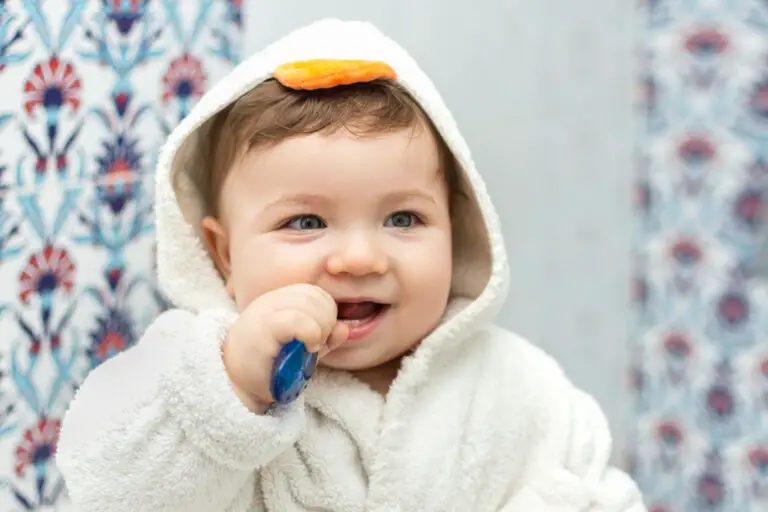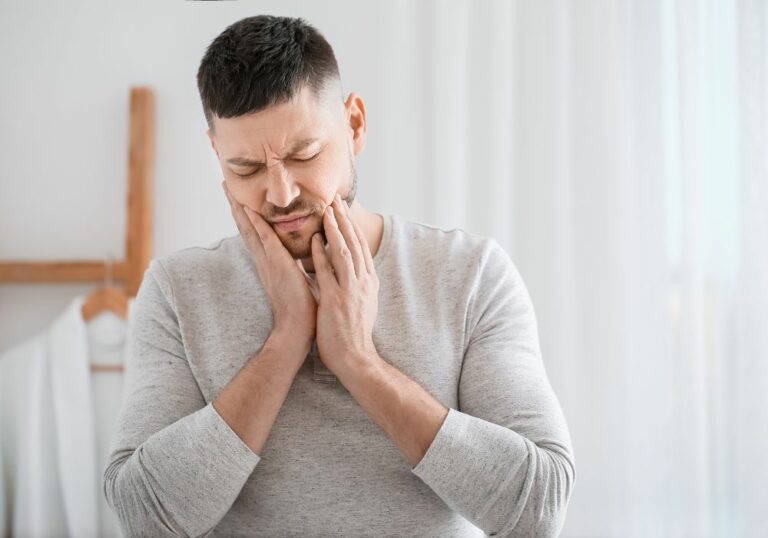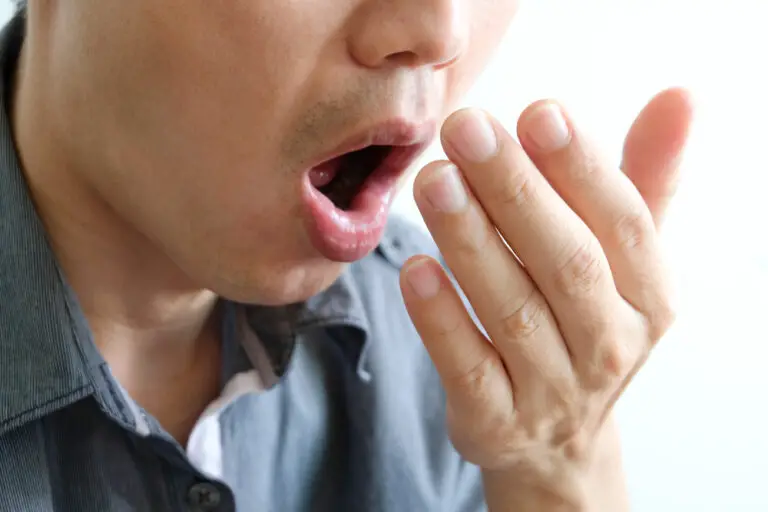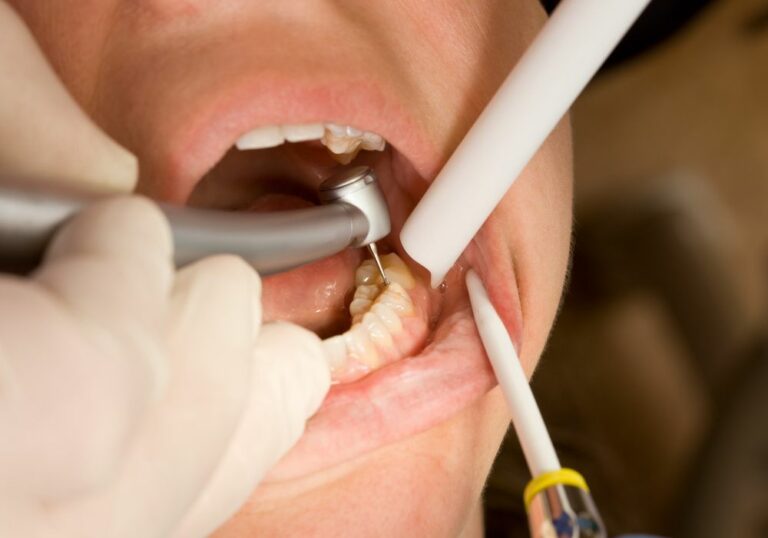As we grow older, it’s common for our teeth to develop a yellowish tint or become darker over time. Teeth naturally change color as part of the aging process, but certain habits and conditions can make this discoloration worse. Understanding what causes our teeth to turn yellow as we get older is the first step toward preventing further yellowing and regaining a brighter, whiter smile.
The Anatomy of Teeth
To understand what makes teeth turn yellow, it helps to first look at the underlying tooth anatomy and composition. Teeth are made up of multiple layers:
Enamel – The visible outer layer of the tooth made of highly mineralized material that protects the tooth. Enamel is naturally white but does contain some subtle transparent tones.
Dentin – This layer below the enamel is less mineralized and more porous and yellow in color as it contains more organic material.
Pulp – The inner soft tissue containing nerves and blood vessels. The pulp lies within the pulp chamber inside each tooth.
Cementum – This bone-like tissue covers the dentin root surfaces of teeth. It appears more yellow than other tooth layers.
Gums – The gums consist of firm pink tissue that surrounds and supports the teeth.
Why Teeth Turn Yellow with Age?
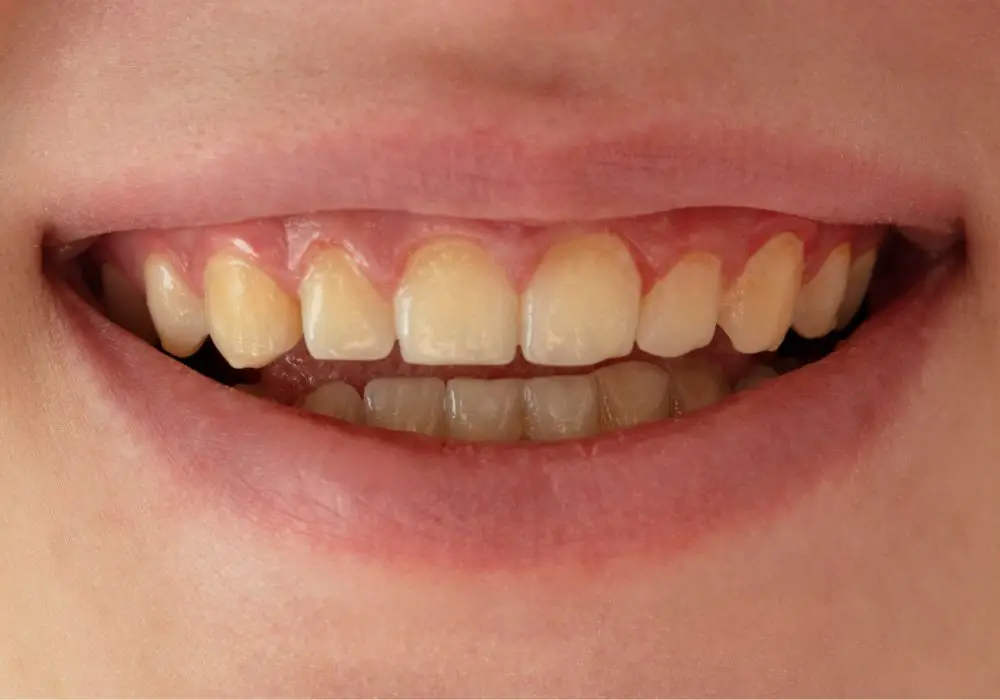
There are several reasons our teeth gradually become more yellow as we get older:
1. Thinning Enamel Layer
The enamel is designed to protect teeth and also lend them their white color. But enamel naturally wears down and thins over time from chewing and exposure to acidic foods and plaque acids. As the enamel layer gets thinner, more of the yellowish dentin underneath shows through, so teeth appear yellower.
2. Enamel Mineral Loss
Enamel contains high amounts of minerals like calcium and phosphate that help keep it dense and white. Aging causes the mineral content in enamel to decrease over decades. With less minerals, enamel becomes more porous and translucent. This allows more of the yellow dentin color to show through.
3. Dentin Changes
Not only does thinning enamel expose more dentin, but the dentin itself undergoes changes with aging that make it appear darker and more yellow. Dentin mineralization increases over time as the dentin layer gets thicker and filler materials build up within it. The dentin slowly gets harder and also more transparent. All these dentin changes allow for more yellowing to show through.
4. Pulp Chamber Expansion
The pulp chamber inside the tooth expands with age as the inner pulp recedes. This enlargement of the chamber makes the surrounding dentin walls thinner, particularly on the upper portion of teeth. Thus the darker color of the pulp shows through more as the dentin here becomes thinner and more transparent.
5. Reduced Saliva Flow
Saliva contains minerals that help strengthen enamel as well as enzymes that break down food particles. Saliva production decreases as we age, allowing more staining and erosion to occur. Insufficient saliva also allows plaque to build up faster, creating more enamel loss over time.
6. Gum Line Receding
As gums recede down from aging and periodontal disease, more of the yellow root cementum underneath is exposed. This can give teeth an overall more yellow look.
7. Accentuated Staining
Many foods, drinks and substances we intake can stain teeth to varying degrees. Without as much protective enamel, aging teeth are more prone to picking up and retaining stains from sources like coffee, tea, wine, tobacco, medications, berries etc. Even with good hygiene, some staining accumulates over decades.
Preventing Further Yellowing
While natural aging processes will always occur, we’re not helpless when it comes to preventing additional yellowing and discoloration of our teeth. Here are proactive steps you can take:
- Maintain a thorough daily oral hygiene routine – brush properly at least twice a day for 2 minutes, floss between teeth, use antiseptic mouthwash. This minimizes enamel erosion and stain buildup.
- Visit the dentist regularly for cleanings and checkups – professional cleanings remove hardened plaque and surface stains missed by daily brushing and flossing.
- Limit consumption of staining drinks like coffee, tea, cola and red wine or drink them through a straw to minimize contact with teeth. Rinse mouth with water after consuming them.
- Avoid tobacco products – cigarettes, cigars and chewing tobacco severely stain teeth and promote gum recession.
- Get fluoride treatments – fluoride strengthens enamel and makes it more resistant to acids and plaque.
- Watch acidic diets – frequent acidic foods can erode enamel over time.
- Use whitening toothpastes and rinses – gently remove surface stains to minimize yellowing.
- Get professional whitening treatments periodically – performed under dentist supervision for optimal effect and safety. Can be repeated as needed.
Treatment Options for Yellow Teeth
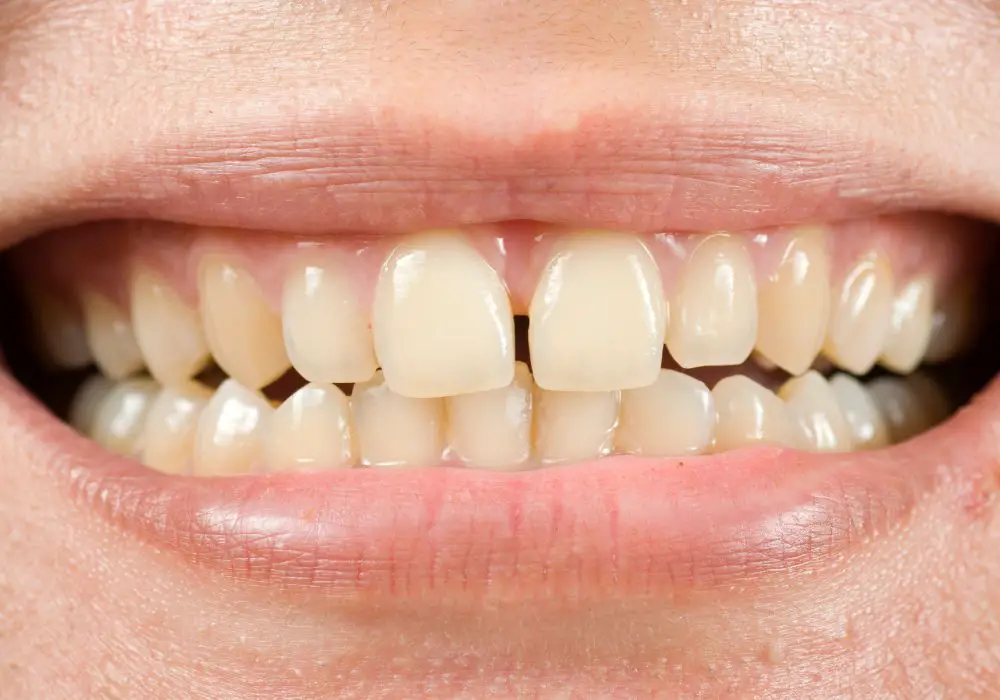
If your teeth have already developed a considerable amount of yellowing or darkening over the years, don’t despair. There are several effective options dentists now offer to whiten teeth and restore a brighter, more youthful smile.
1. In-Office Laser Teeth Whitening
The fastest way to dramatically whiten teeth is through in-office laser whitening. First a protective barrier is applied to the gums. Then a high-concentration peroxide whitening gel is applied to the teeth before shining a special blue light or laser on them to accelerate the whitening effect in about an hour.
2. Custom Take-Home Whitening Trays
The dentist takes an impression of your teeth and fabricates custom-fitted plastic trays to hold the whitening gel against the teeth evenly. A lower concentration of peroxide gel is used than with in-office whitening. The custom trays allow you to whiten at home over 1-2 weeks with daily wear for 1-2 hours or overnight wear. More affordable than in-office treatments.
3. Over-the-Counter Whitening Strips and Gels
Whitening strips coated with peroxide gel are affordable and easy to apply directly to your teeth for 30-60 minutes daily at home. This gradual method can lighten mild stains over a couple weeks. Peroxide trays and paint-on gels are also available over-the-counter. Dentist-monitored use is recommended for strips and gels.
4. Other Tooth Color Restorations
For people with severe tooth discoloration, other options like dental veneers or dental bonding can mask the problem color by adhering porcelain or composite resin facings to the front of teeth. More expensive than the other methods but provides dramatic, lasting results.
Consult your dentist to determine the best professional whitening method based on the degree of your discoloration, your goals and your dental health. With the advanced treatments now available, you can successfully restore dingy, yellowed teeth back to a naturally white smile.
Maintaining a Bright Smile
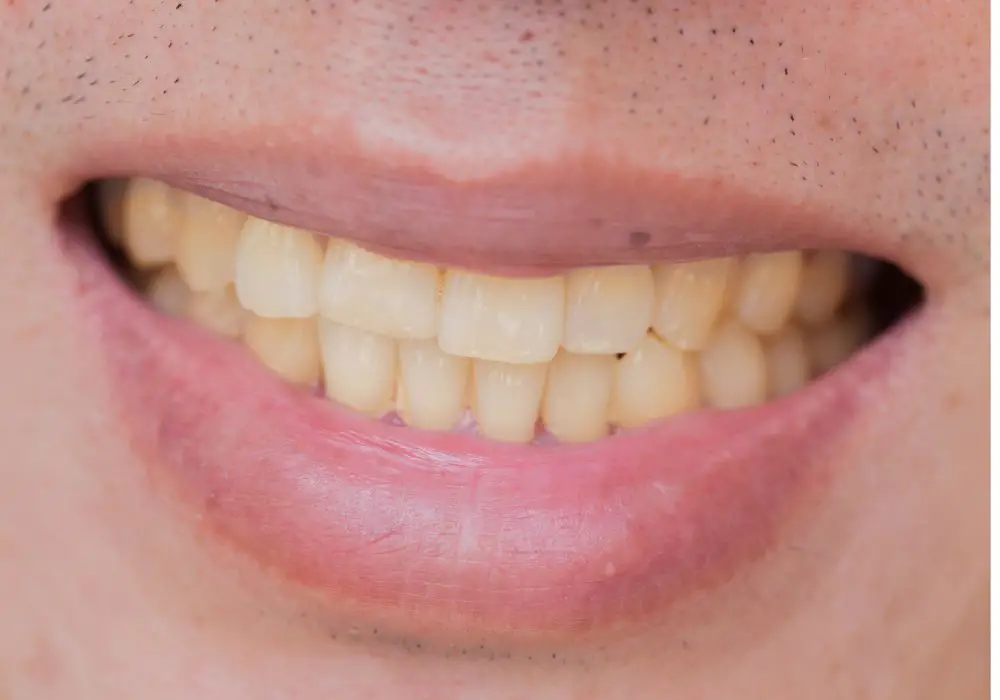
While professional whitening can take years off your smile initially, taking steps to prevent future discoloration and yellowing will keep your smile looking younger and brighter long-term.
- Continue diligent oral hygiene and get regular dental cleanings
- Use whitening toothpastes or rinses periodically at home
- Avoid or minimize staining food and drinks
- Repeat the same type of whitening method annually or as needed
- Consider take-home whitening trays for touch-ups
- Get restorations like veneers touched up if staining occurs around margins
By understanding what causes our teeth to yellow with age and taking preventive action, we can slow down staining and discoloration. Your smile will not only look more youthful, but your dental health will benefit as well from good oral hygiene and professional care. Don’t let time dull your smile. Take charge to enjoy properly cared for teeth that stay naturally white and healthy looking for life.
Frequently Asked Questions
Why do teeth yellow at different rates in different people?
The extent and rate of yellowing varies based on factors like genetics, enamel thickness, oral hygiene habits, diet, amount of saliva flow and chemical exposure. Habits like smoking also stain teeth much quicker than in non-smokers. The natural aging processes of enamel thinning and dentin changes happen at different paces among people.
How are stains different than yellowing?
Stains are mainly an external discoloration coming from pigmented foods, drinks and substances that adhere to the enamel surface or get trapped in ridges. Aging causes yellowing of the internal tooth structure as the dentin layer becomes more visible. However, with thinner enamel, external stains can penetrate deeper and become intrinsic over time.
Can yellow teeth be a sign of decay?
Not necessarily. Moderate gradual yellowing is a natural part of aging. Very severe darkening and discoloration could indicate long-term untreated tooth decay destroying inner tooth layers. Make the dentist aware of any abnormal color changes. Yellowing alone, however, is not an automatic indication of active decay.
Does teeth whitening weaken enamel?
It can temporarily if not done correctly. Products with an improper high percentage of hydrogen peroxide and unmonitored use can make teeth slightly more porous. Dentist-supervised whitening done in appropriate sessions allows time for enamel remineralization. Newer systems using hydrogen peroxide with calcium are designed to minimize enamel sensitivity.
How permanent are whitening treatments?
No whitening results last forever. Depending on treatment type and your habits, teeth can gradually start to re-stain anywhere from a couple months later to a year later. Periodic touch-up treatments will maintain a lighter color more long-term compared to a single treatment. Avoiding staining food and drink helps prolong results.
Conclusion
Aging brings natural changes to our teeth, including gradual yellowing and darkening of the inner tooth layers. Thinning enamel and altered dentin allow more yellow hues to show through over time. Staining from food, drinks and habits also becomes more pronounced. While we cannot totally prevent aging of our teeth, being proactive with good oral hygiene, judicious diets and professional whitening treatments can slow discoloration. Taking proper preventive steps and seeing your dentist regularly for exams and cleanings will help keep your smile looking bright, white and youthful for many years to come.

